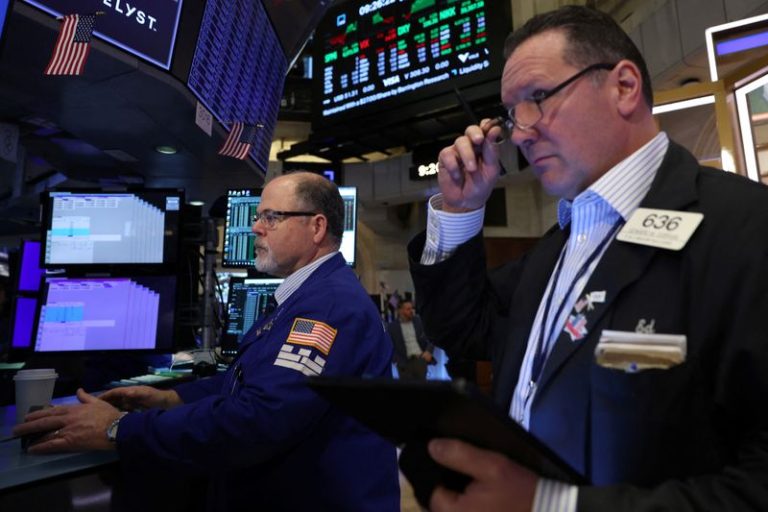(Reuters) – U.S. stock index futures firmed on Tuesday, as investors assessed newly elected President Donald Trump’s executive orders on issues including energy and immigration, while awaiting his first move on trade policy.
President Trump did not immediately impose tariffs on Monday as previously promised, but said he was thinking about imposing 25% duties on imports from Canada and Mexico on Feb. 1 over illegal immigrants and fentanyl crossing into the United States.
Investors took some comfort that Trump did not lay concrete plans on the universal tariffs and additional surcharges on close trade partners that he had pledged during his campaigns.
Brokerage Goldman Sachs lowered its forecast for a universal tariff this year to 25% from about 40% seen in December.
At 05:39 a.m. ET, Dow E-minis were up 189 points, or 0.43%, S&P 500 E-minis were up 29.25 points, or 0.48% and Nasdaq 100 E-minis were up 120.75 points, or 0.56%.
The quarterly earnings season will also pick up this week, with reports from Prologis (NYSE:PLD), 3M and DR Horton (NYSE:DHI) among others, due before markets open.
Futures tracking the domestically focused small-cap Russell 2000 index added 0.7%.
Automakers General motors and Ford (NYSE:F) that have supply chains spread across the continent edged up 2.1% and 1.6%. Elon Musk-led Tesla (NASDAQ:TSLA) added 2.3% premarket trading.
U.S.-listed shares of Chinese companies Xpeng (NYSE:XPEV) and Li Auto (NASDAQ:LI) added 6.8% and 5.8%, respectively on no signs of imminent surcharges on Chinese goods.
Markets have been sensitive to any reports on Trump’s tariff policies on concerns it could spark a global trade warand fresh inflation pressures.
“Tariffs mean a stronger U.S. dollar due to higher import prices and weaker global growth, no tariffs means stronger global trade and a more robust global growth backdrop,” said Kyle Rodda, senior markets analyst at Capital.com.
“Just like the first Trump administration, the markets are highly sensitive to headline risk, especially as it relates to trade wars.”
During the first year of Trump’s first administration, the S&P 500 rose 19.4%, while during the entirety of his first term, the benchmark index rose nearly 68%, but saw bouts of volatility, stemming in part from a trade war Trump fought with China.
However, inflation is still above the Federal Reserve’s 2% target, stoking worries that Trump’s policies could delay the central bank’s pace of monetary policy easing.
Economists see the Fed leaving borrowing costs unchanged when it meets next week and traders see the first interest rate coming in July, according to data compiled by LSEG.
Oil stocks Halliburton (NYSE:HAL) rose 2.2% and SLB climbed 1.9% after Trump declared a national energy emergency to accelerate permitting oil, gas and power projects.
Prison operators Geo advanced 3.2% and CoreCivic (NYSE:CXW) rose 7.8%, after Trump declared a national emergency on illegal immigration at the U.S.-Mexican border.
Nuclear stocks Oklo rose 6.4% and Vistra added 6.3% as energy secretary Chris Wright said he plans to prioritize domestic nuclear energy production.
Apple (NASDAQ:AAPL) fell 1% after brokerage Jefferies cut its rating on the iPhone maker to ‘underperform’.

